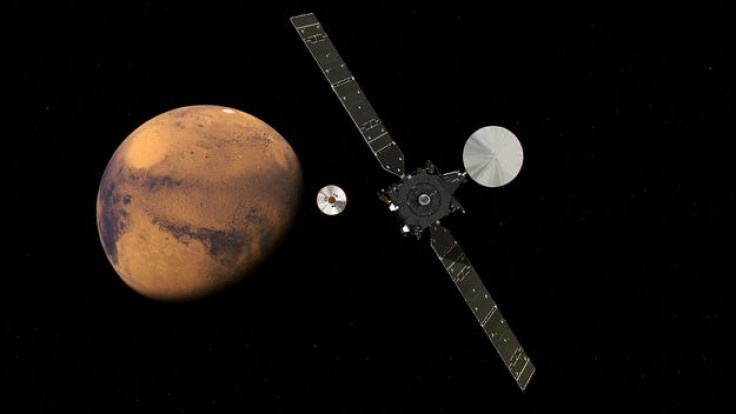ExoMars Schiaparelli Lander May Have Crashed Because Of A Computer Glitch

A software glitch in the computers on board the ExoMars Schiaparelli lander may have caused it to crash on the surface of the red planet last week, Nature reported Tuesday, citing Andrea Accomazzo, the European Space Agency’s head of solar and planetary missions. If this is true, it would — despite what it sounds like — ultimately be good news for the folks at ESA, as a software issue is easier to fix than a problem with the lander’s hardware.
“If we have a serious technological issue, then it’s different, then we have to re-evaluate carefully,” Accomazzo told Nature. “But I don’t expect it to be the case.”
The ExoMars spacecraft — a product of a collaboration between the Russian space agency Roscosmos and the ESA — consisted of two parts, a Trace Gas Orbiter (TGO) and the Schiaparelli Entry, Descent and Landing demonstrator module. The main objective of the ExoMars mission is to search for evidence of methane — a gas emitted by living microbes on Earth, and traces of which have been observed by previous Mars missions — and other trace atmospheric gases that could be signatures of active biological or geological processes.
Last week, after a seven-month long journey, the TGO successfully inserted itself into an orbit around the Mars — where it is currently circling the red planet once every 4.2 days. However, the lander, which was supposed to make a soft landing on the surface, failed to beam back signals that would have shown that it had done so successfully.
On Friday, NASA released images captured by its Mars Reconnaissance Orbiter (MRO), showing what appeared to be fresh scorch marks in the Meridiani Planum — the region where Schiaparelli was supposed to touch down.

Although the investigation is still ongoing, the images seem to indicate that the lander most likely exploded on impact, as its thrusters propellant tanks were still full. Jorge Vago, a project scientist for ExoMars, told Nature that the lander’s heat shield and parachutes may have ejected ahead of time. And, due to the glitch in the lander’s computer, the thrusters, which were supposed to fire for 30 seconds, switched off after just 3 seconds.
“My guess is that at that point we were still too high,” Vago said. “And the most likely scenario is that, from then, we just dropped to the surface.”
Further analysis of data in the coming days will reveal the fate of the lander, but, despite the hitch, scientists at ESA were quick to point out that the mission was a massive success as all the main goals — placing the ExoMars Trace Gas Orbiter (TGO) in orbit around Mars to serve as a relay module for the second phase of the ExoMars mission scheduled to take place in 2020, and gathering “meaningful” data during Schiaparelli's six-minute descent — had been accomplished.
“As it is, we have one part that works very well and one part that didn’t work as we expected,” Vago told Nature. “The silver lining is that we think we have in hand the necessary information to fix the problem.”
© Copyright IBTimes 2024. All rights reserved.












